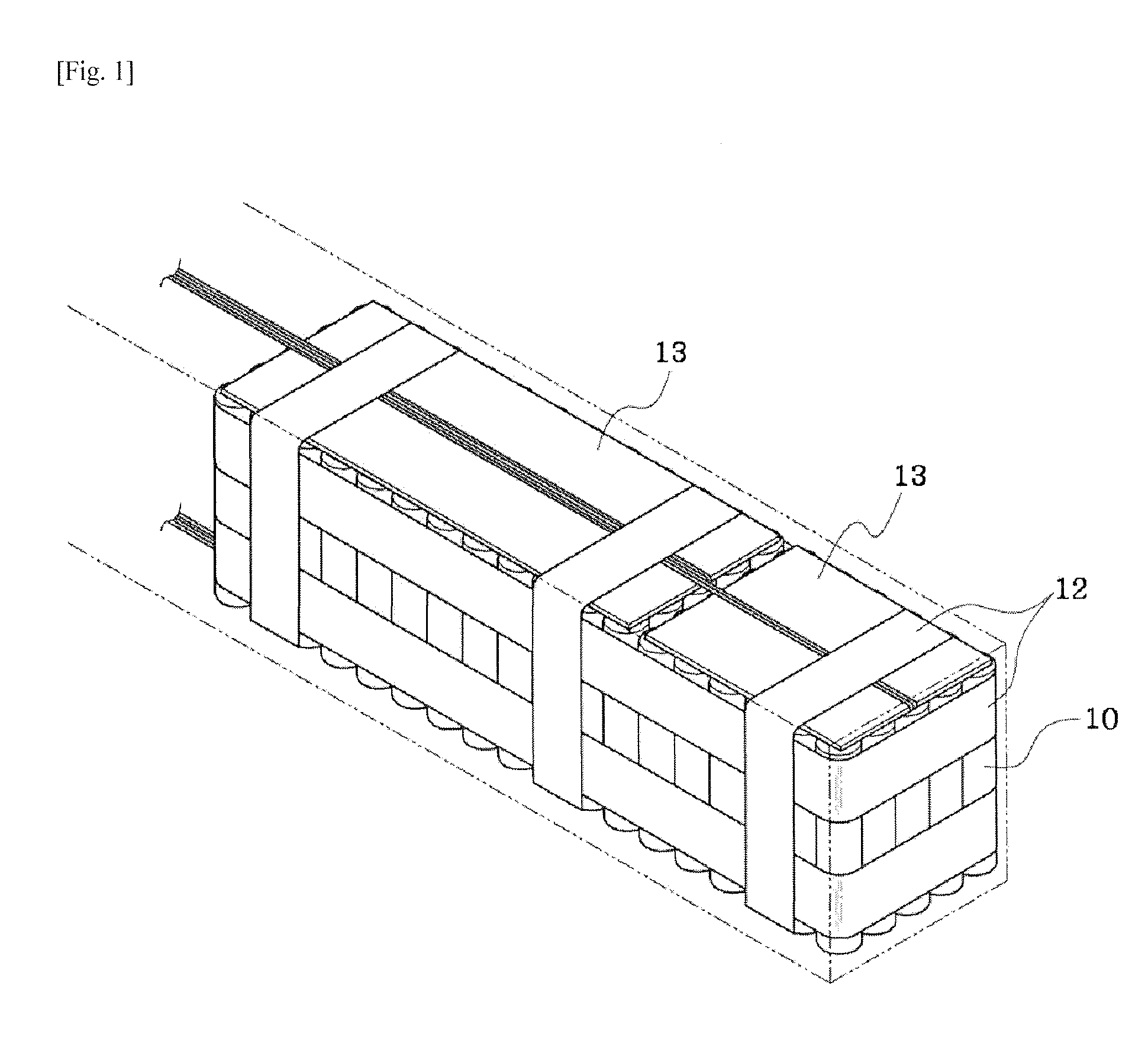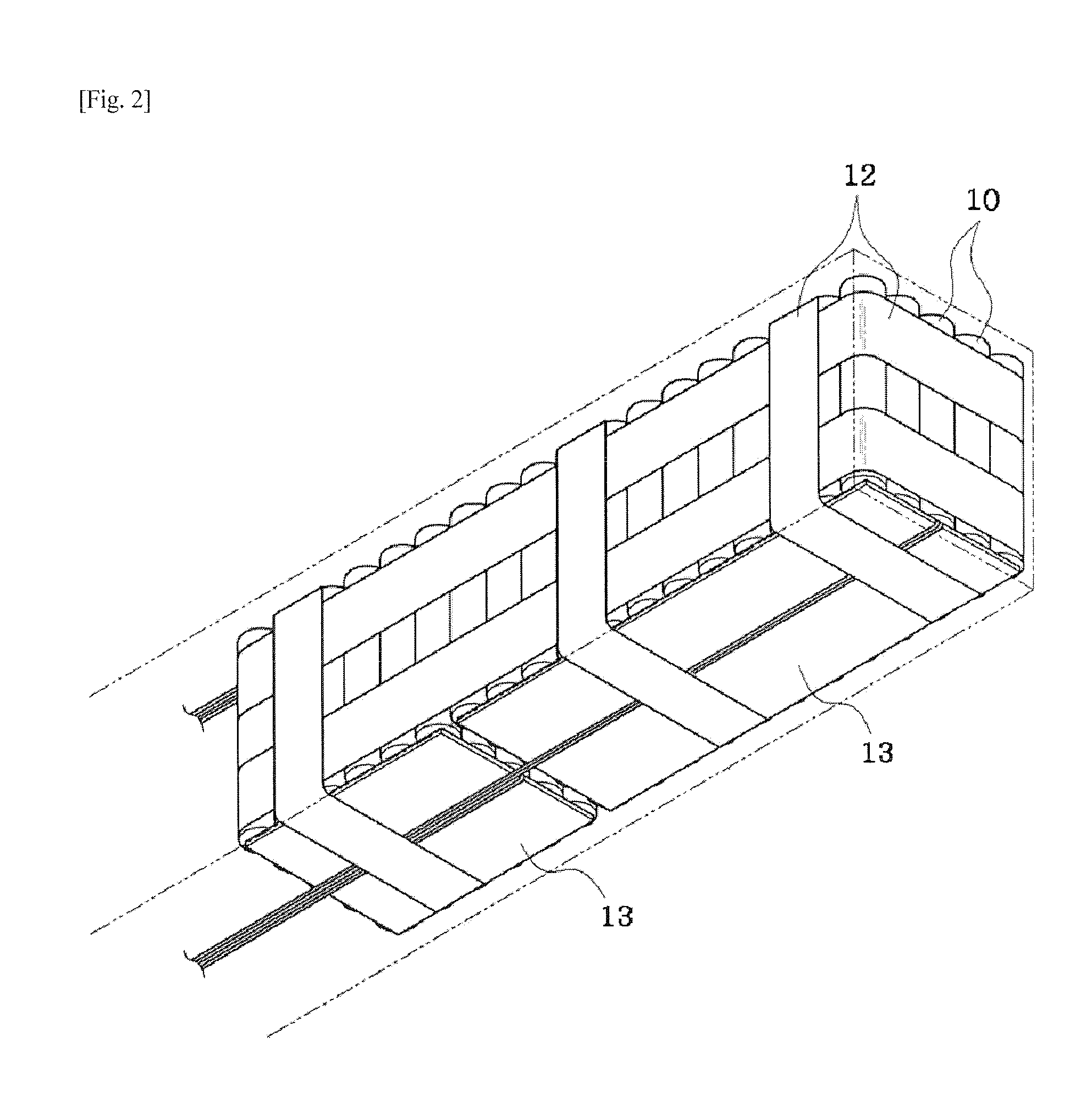Cell Cartridge with a Composite Intercell Connecting Net Structure
a cell cartridge and net structure technology, applied in the field of cell cartridges, can solve the problems of inaccuracy of battery pack manufacturing standards, a large amount of time required for processing, and a large number of defects, so as to improve assembly and production efficiency, shorten the time required for assembly, and increase the accuracy of manufacturing standards
- Summary
- Abstract
- Description
- Claims
- Application Information
AI Technical Summary
Benefits of technology
Problems solved by technology
Method used
Image
Examples
first embodiment
[0107]FIG. 14 is a cross-sectional view showing a connection plate terminal structure in accordance with the present invention, in which the terminal 102a connected to the negative electrode and the terminal 102b connected to positive electrode have different shape to ensure the connection of the cells 10.
[0108]First, the terminal connected to the negative electrode of the cell 10 comprises an elastic terminal plate 102a. As shown in FIG. 14, the elastic terminal plate 102a with a Z-shaped plate spring is fixedly inserted into to the connection plate 101 such that the top of the elastic terminal plate 102a is elastically connected to the negative electrode of the cell 10. The elastic terminal plate 102a is formed of an elastic conductive metal plate.
[0109]Preferably, the bottom of the elastic terminal plate 102a is fixed to the rear of the connection plate 101 by spot welding, for example, such that the elastic terminal plate 102a can be fixedly secured to the connection plate 101. ...
second embodiment
[0115]FIG. 16 is a cross-sectional view showing a connection plate terminal structure in accordance with the present invention, in which each of the connection plates 101 fixedly mounted on the case body and the upper cover, respectively, comprises a plurality of terminals 102 formed of a conductive material and projecting to connect to cell terminals 11 (i.e., electrode). Here, a magnet 103 is inserted in the middle of each of the terminals 102 of the connection plate 101.
[0116]As a result, the cell terminal 11 is attached to the magnet 103 such that the connection plate terminal 102 can be firmly connected to the cell terminal 11. That is, since both the terminals 11 and 102 are attached to each other by the magnetic force of the magnet 103, the contact state between the case terminals 102 (i.e., connection plate terminals) and the terminals 11 of the cells 10 accommodated in the case can be securely maintained, even when an external vibration is applied thereto.
third embodiment
[0117]FIG. 17 is a cross-sectional view showing a connection plate terminal structure in accordance with the present invention, in which the surface of the connection plate terminal 102 to be in contact with the cell terminal 11 has a round embossed pattern such that the connection plate terminal 102 can be in uniform contact with the cell terminal 11.
PUM
| Property | Measurement | Unit |
|---|---|---|
| distance | aaaaa | aaaaa |
| angle | aaaaa | aaaaa |
| electrical energy | aaaaa | aaaaa |
Abstract
Description
Claims
Application Information
 Login to View More
Login to View More - R&D
- Intellectual Property
- Life Sciences
- Materials
- Tech Scout
- Unparalleled Data Quality
- Higher Quality Content
- 60% Fewer Hallucinations
Browse by: Latest US Patents, China's latest patents, Technical Efficacy Thesaurus, Application Domain, Technology Topic, Popular Technical Reports.
© 2025 PatSnap. All rights reserved.Legal|Privacy policy|Modern Slavery Act Transparency Statement|Sitemap|About US| Contact US: help@patsnap.com



